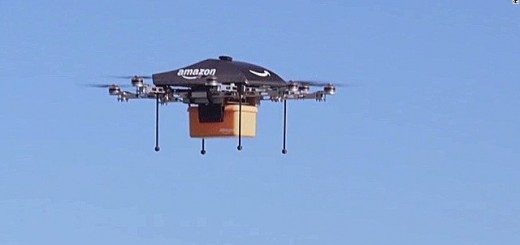
When Part 107 was released last week, some industry stakeholders expressed hope that the new drone regulations would signal a shift in the regulatory environment that would finally allow the drone industry to hit its stride here in the U.S. Representatives from DJI, the global leader in small drone manufacturing, called the publication of the Small UAS Rule “a watershed moment.” Brian Wynne, president of the Association of Unmanned Vehicle Systems International (AUVSI) declared victory: “Today’s release of the final small UAS rule by the FAA is a critical milestone in the integration process, and a long-awaited victory for American businesses and innovators.” But other industry leaders said that the rule fell far short of encouraging U.S. drone businesses, as critical restrictions against flight beyond visual line of sight (BVLOS) and over people remain in place.
Drone delivery company Flirtey, the first company to work with the FAA to test drone delivery in the U.S., warned regulators that companies would flee overseas in search of more flexible drone regulations. Posting a statement to Twitter after the announcement of Part 107, the company said: “…Countries like New Zealand are currently leading the charge in creating risk-based regulations for commercial drone applications, and the FAA must move quickly to assure the U.S. does not fall behind in the rapidly advancing global growth of drones.”
Flirtey’s warning was only the latest in a long list of complaints. Intel‘s VP of New Technology, Joshua Walden, testified before Congress last year that drone regulations needed to be carefully considered to keep business in the U.S. “It is possible to both improve safety and promote American innovation involving advances in drone technology,” said Walden. “However, a federal government approach that is overly prescriptive regarding the deployment of new hardware and software will deter the private sector’s ability to invent and compete in the marketplace. Worse, it will drive us to relocate our business planning and R&D overseas, where we are being welcomed by foreign countries eager for investment in this new technology area.”
These warnings have come too late for some companies, who have quietly removed their testing programs outside of the U.S. – taking the technical jobs, and the valuable expertise associated, with them. The Financial Times reports that Amazon’s testing sites are distributed across the globe – with one of them less than a mile across the border in British Columbia. In addition to it’s U.S. facilities and the Canadian site, Amazon has drone research and development centers in the UK, Netherlands, Austria and Israel. The company is pushing forward on plans for drone delivery – and increasingly sending the message that drone delivery may happen outside of the U.S.
“It is entirely possible that we will launch Prime Air in another country before the US,” says Paul Misener, vice-president for public policy at Amazon. While Amazon has quickly become a powerful lobby in Washington, regulations are simply not moving fast enough to keep them here. And while many in the U.S. may not see the value in drone delivery, it is just a small part of a much, much larger plan by Amazon to take logistics and delivery into their own hands – a program that represents investment of billions of dollars in the countries that get the benefit. The company has already doubled its fleet of aircraft, and made huge investments in other infrastructure and logistics systems to handle shipping and transportation. Drone delivery is the piece of the puzzle designed to get the package the very last step of the way – to the customer’s doorstep.
Google won’t be left behind. With multiple patent applications for drone projects and their own plans for drone delivery, Google has also quietly moved parts of their project overseas; Google has been testing drone delivery in Australia, where regulations are more favorable.
Intel’s threats to move overseas should also offer concern. The company currently employs over 100,000 people, mostly in the U.S.: they are, for example, Oregon’s largest employer. And while those jobs are certainly valuable, the U.S. should also be worried about where Intel’s investment goes. With massive investments in drone technology and the Internet 0f Things last year, the company is clearly shifting it’s focus and strategy away from PCs. While Intel invested about $40 million in Silicon Valley startup Airware (who, the Washington Monthly reported last year, is forced to sell most of its products overseas) but in the same year they invested over $60 million in Chinese drone manufacturer Yuneec and acquired German drone company Ascending Technologies – with their 75 employees – for an undisclosed amount.
It isn’t only the jobs and the money that stakeholders should be concerned about; as companies are pushed to move their research and development overseas in order to test innovative drone technologies, the expertise – and the educational framework that supports a cluster – goes with it. Other countries are actively building clusters in order to attract the highly skilled, highly paid workforce and the industry that supports them; and as regulations here move far more slowly than new ideas, U.S. companies are quietly opening offices elsewhere and hedging their bets that the U.S. will ever catch up.
Miriam McNabb is the Editor-in-Chief of DRONELIFE and CEO of JobForDrones, a professional drone services marketplace, and a fascinated observer of the emerging drone industry and the regulatory environment for drones. Miriam has penned over 3,000 articles focused on the commercial drone space and is an international speaker and recognized figure in the industry. Miriam has a degree from the University of Chicago and over 20 years of experience in high tech sales and marketing for new technologies.
For drone industry consulting or writing, Email Miriam.
TWITTER:@spaldingbarker
Subscribe to DroneLife here.